While most of my travels take me near the ocean to incorporate diving, this was a completely different trip for me with different objectives. Don’t get me wrong – there are lovely coastal areas in El Salvador and even some interesting dive sites inland within volcanic craters, but I chose to forego those for time in the heart of the city. I wanted an opportunity to continue to practice my Spanish, experience some local culture, and learn more about the history and progression of the people of this country since their civil war.
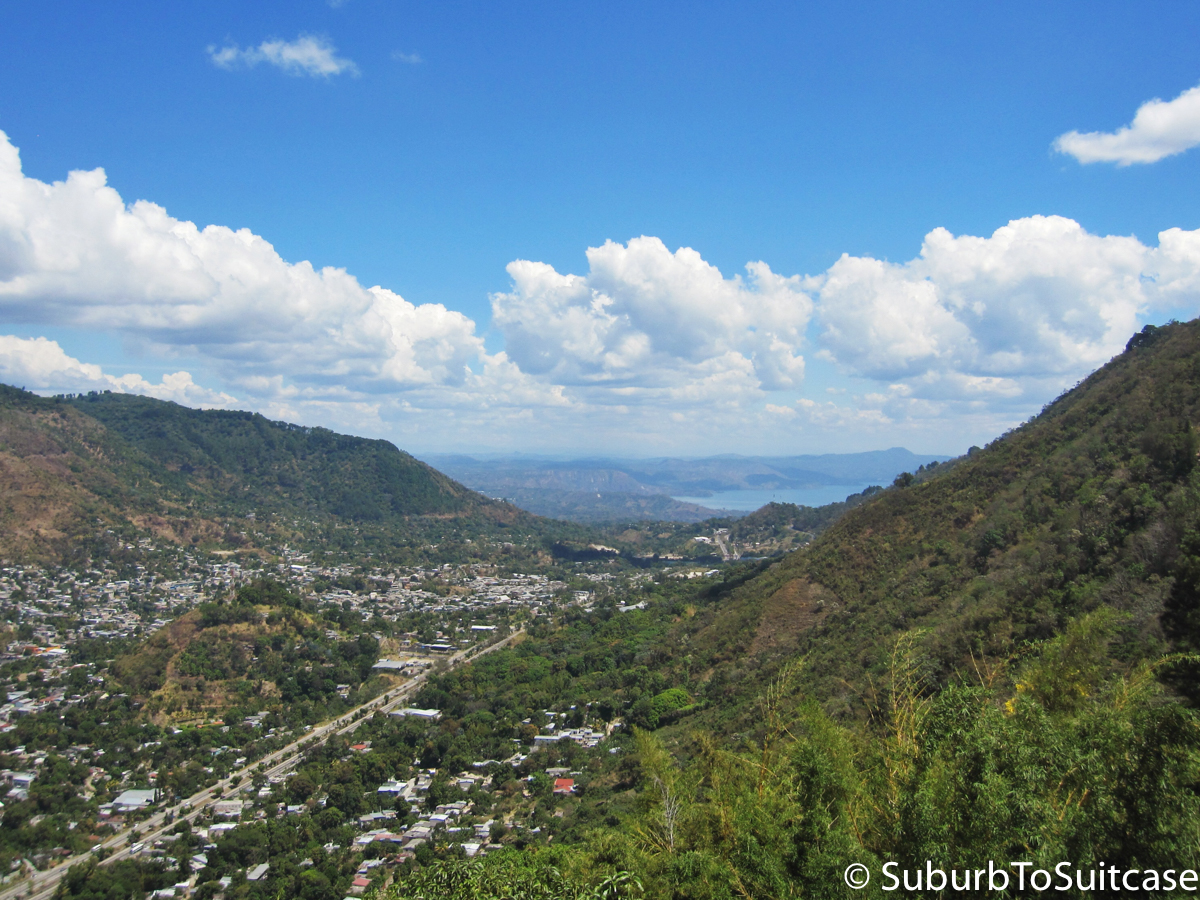
Los Planes de Renderos is a beautiful area where you can see for miles. Lago Ilopango in the distance is a volcanic crater lake in the city.

El Salvador is a country with beautiful mountain landscapes
It was extremely hot and humid during my stay, but to respect cultural norms, I chose to wear pants and sleeves. This definitely made me feel more comfortable walking the streets, visiting points of interest and conversing with residents. Even though my Spanish is not perfect, everyone was very patient with me and I routinely received compliments. Through my conversations, it became apparent quickly that speaking Spanish exclusively here was much appreciated and received as a sign of respect. In fact, I credit much of the depth of my experience to the fact that this was the first destination where I was completely immersed in my second language.
There was much to see and do within San Salvador and surrounding areas, but if you have enough time to venture further, I would recommend it. When you have the opportunity to take a photo in the city, it is important to be quick and as discreet as possible. If you are told it is unsafe to use a camera in a particular area, respect that advice and move on. There are plenty of other places where you can capture a memory.
It is a beautiful drive to Parque El Boquerón to see the volcanic crater. The park is surrounded by pretty trails, good views, beautiful flowers, sounds of birds and leaves rustling in the breeze, huge trees, etc. It is definitely cooler here due to the higher elevation. Don’t forget to buy farm-fresh blackberries ($1 USD for an enormous amount) from the street vendors on your drive up or down. As with any local fruit, I recommend rinsing with filtered water.
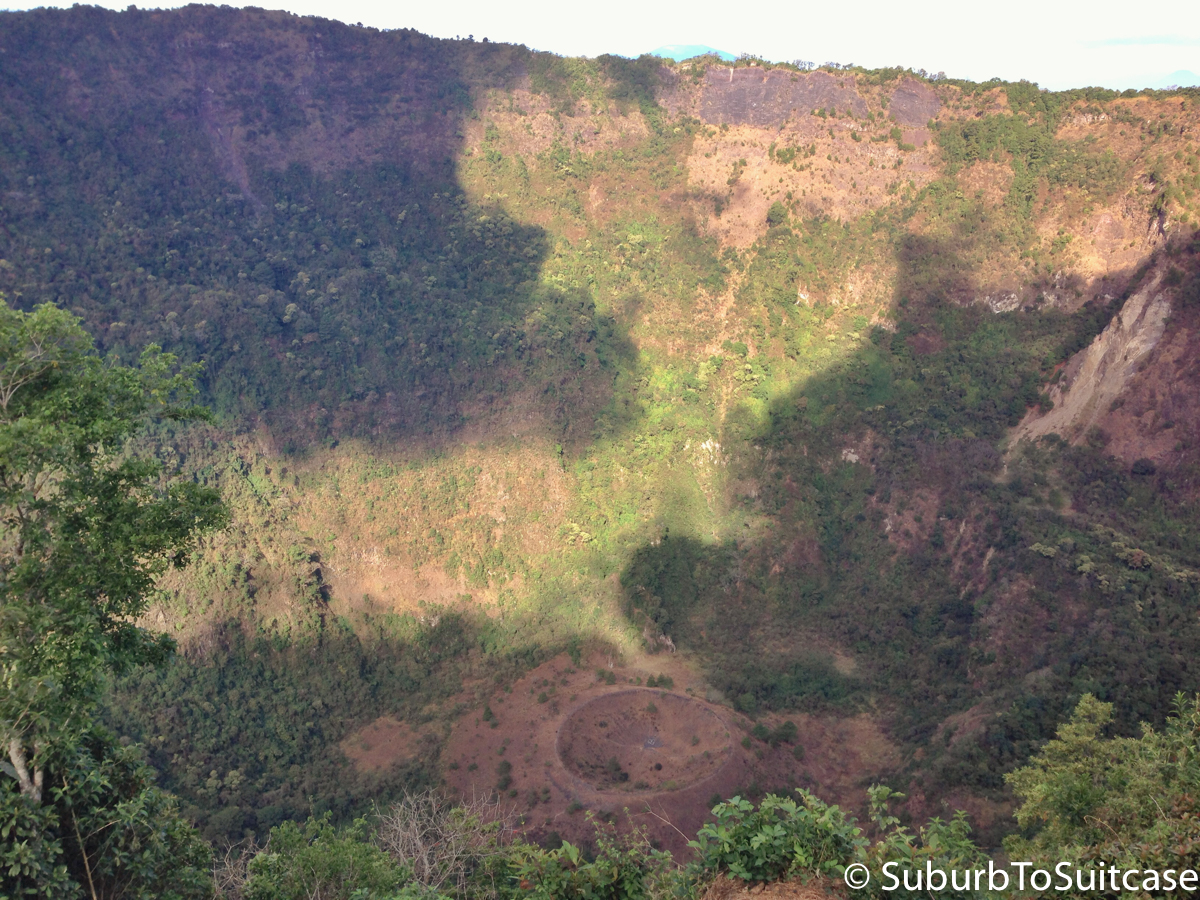
El Boquerón Crater is 1.5 km in diameter and 500m deep – this inactive volcano erupted last in 1917

There are plenty of interesting critters living in the jungles of Central America. This one appeared to be a green version of a ladybug.
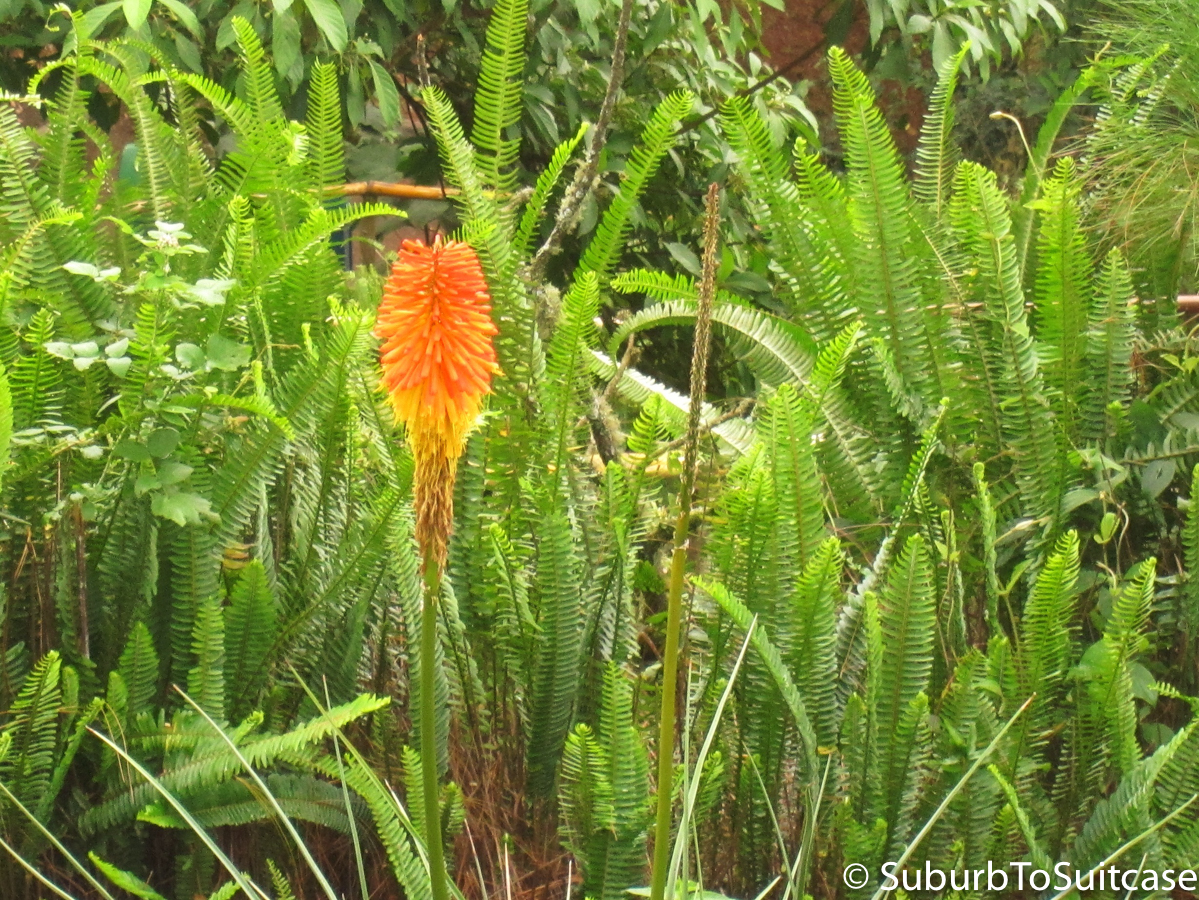
La Torchera “torch” spears in the park
La Puerta del Diablo (“The Devil’s Door”) is another beautiful area in the mountains where you can hike. Due to the heat, humidity, elevation and steep/uneven terrain, hiking-appropriate clothing and shoes are critical. This is a strenuous and intense climb but a beautiful area to see views of the city and try fun adventure sports. There is repelling and ziplining available at times in addition to the hikes.

La Puerta del Diablo – one of the passages at the “Devil’s Door” hiking area outside San Salvador
Spirituality is significant here and there are many remarkable places of worship. Some allow photography inside and others do not, so it is important to read the signs. Catedral Metropolitana has amazing paintings on the ceiling, but my favorite place to visit was definitely Iglesia El Rosario. It is somewhat of a hidden inner-city architectural wonder. The artistry cannot be adequately captured in photo or video, but the stone, marble, metal, glass and brick construction is magnificent. The sunlight casts huge rainbows throughout the inside of the church and it is breathtaking. The Teatro Nacional (national theatre) is within walking distance as well.
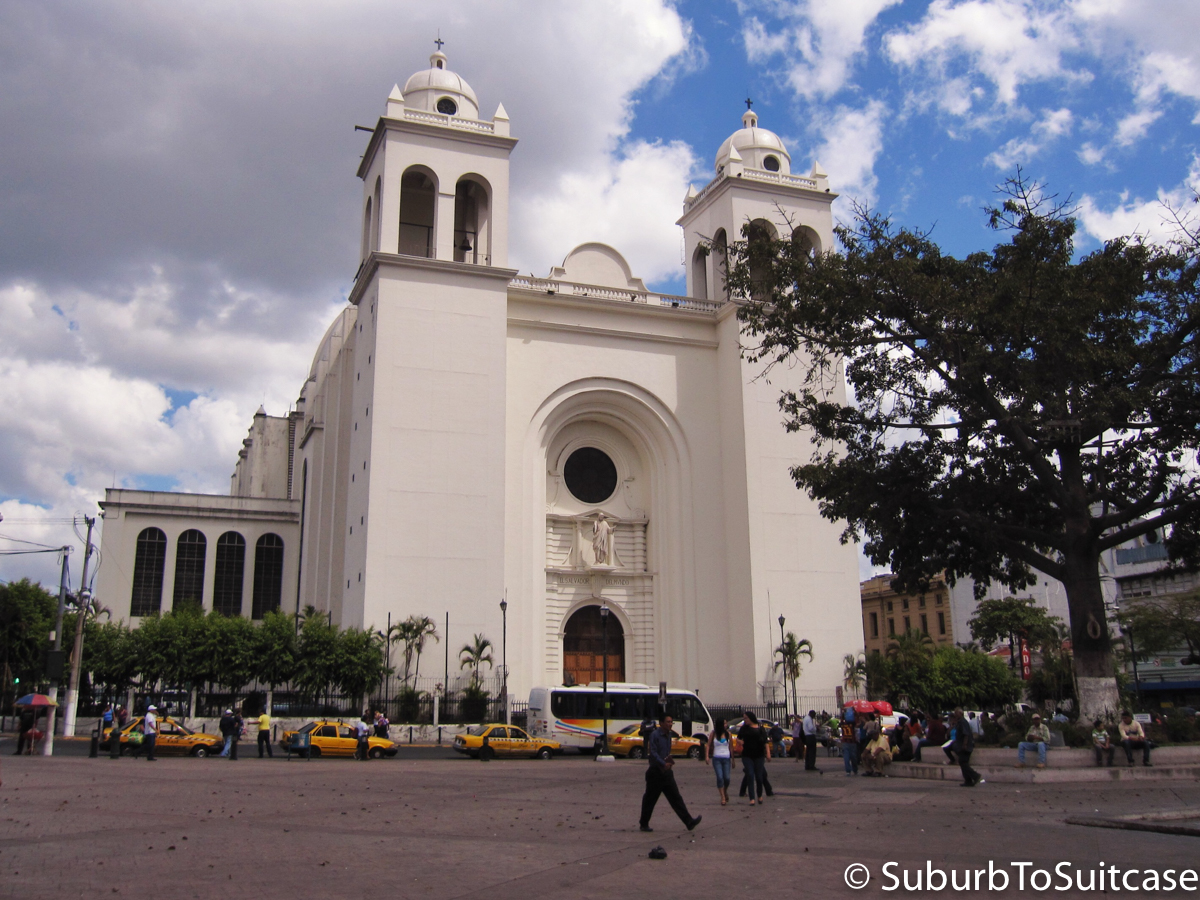
Catedral Metropolitana holds the tomb of Archbishop Óscar Romero whose assassination in 1980 marked the beginning of the Salvadoran civil war.
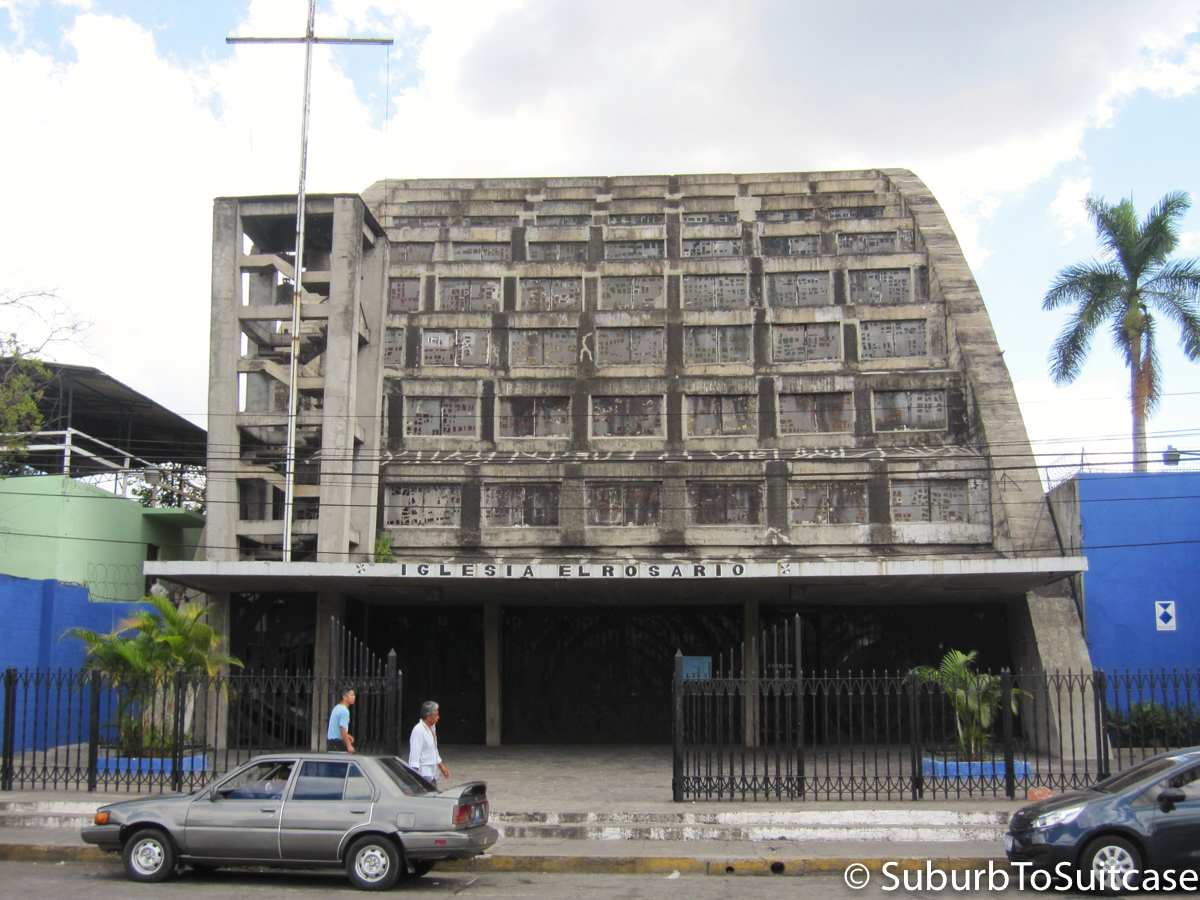
Iglesia El Rosario is an architecturally stunning church in the Libertad neighborhood – outside appearance seems relatively plain, but the inside is magnificent
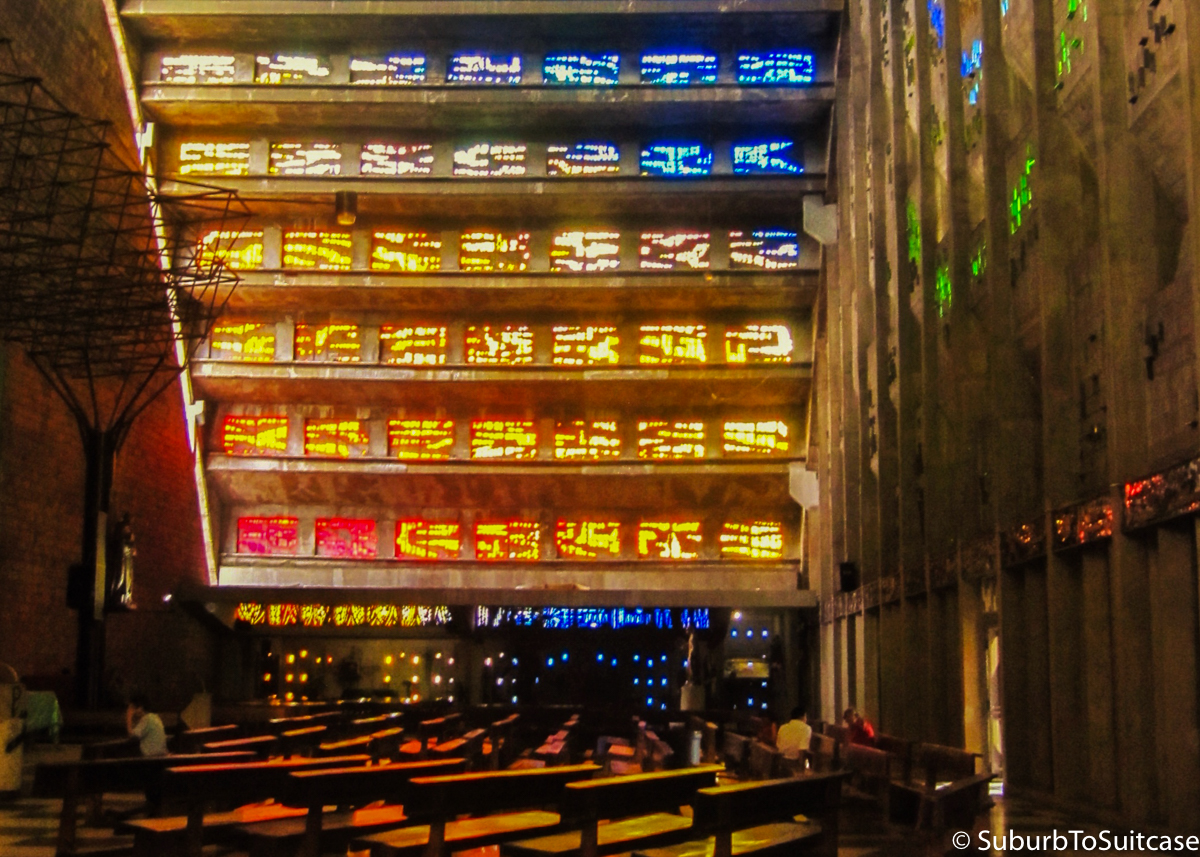
Inside Iglesia El Rosario, arched glass windows among other natural materials (brick, wood, glass, stone, iron) create huge rainbows throughout this church
I enjoyed seeing both the art and anthropological museums in San Salvador. There is so much history (social, religious, agricultural, art, etc.) and the museums did a fantastic job showcasing all of this. The Momentos de Cambio (Moments of Change) exhibition at the Museo de Arte was very moving and truly captured the evolution of art during the civil war period. The art selected to represent the early period of the war was dark and conveyed extreme images of pain and torment. The pieces from the time nearing the end of the war were increasingly brighter and more colorful signifying the hope of the people and the healing to come.
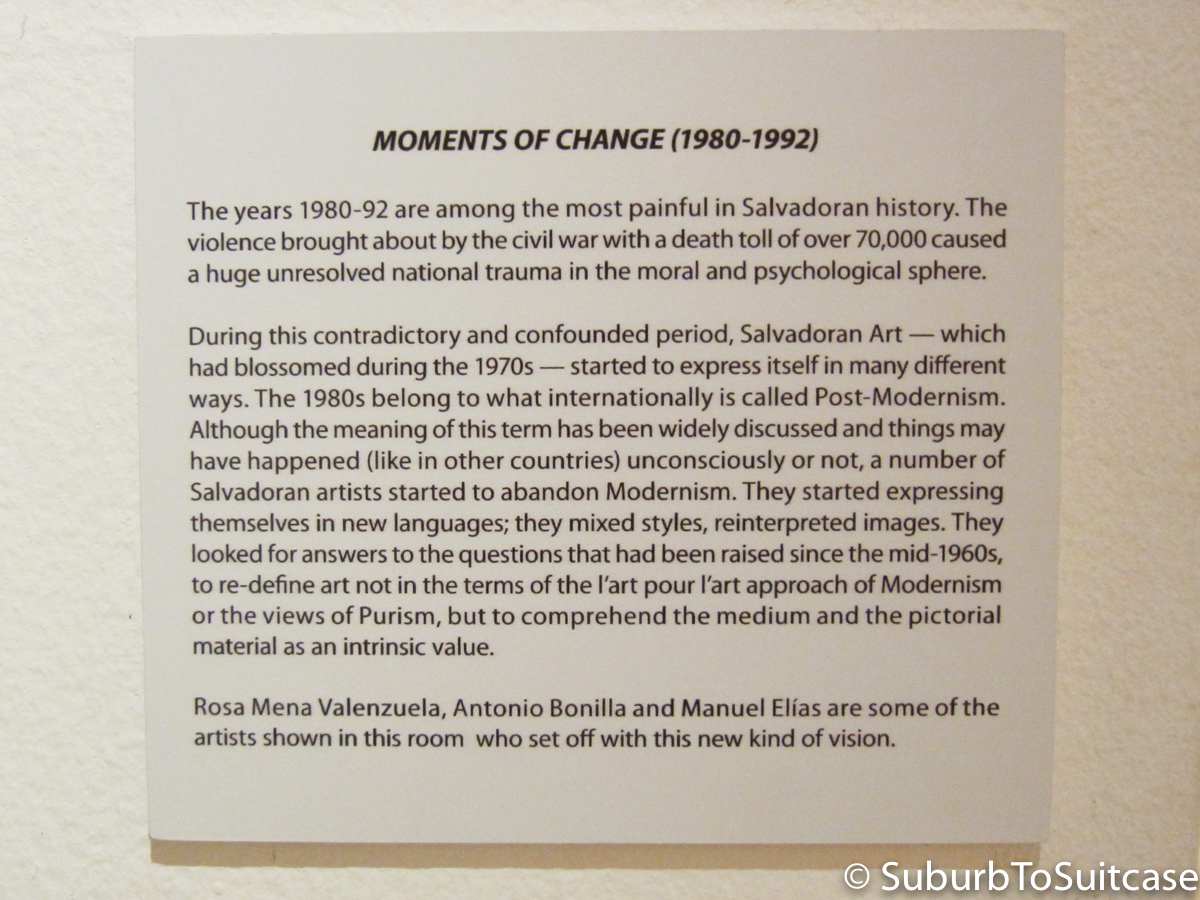
Exhibit: Moments of Change
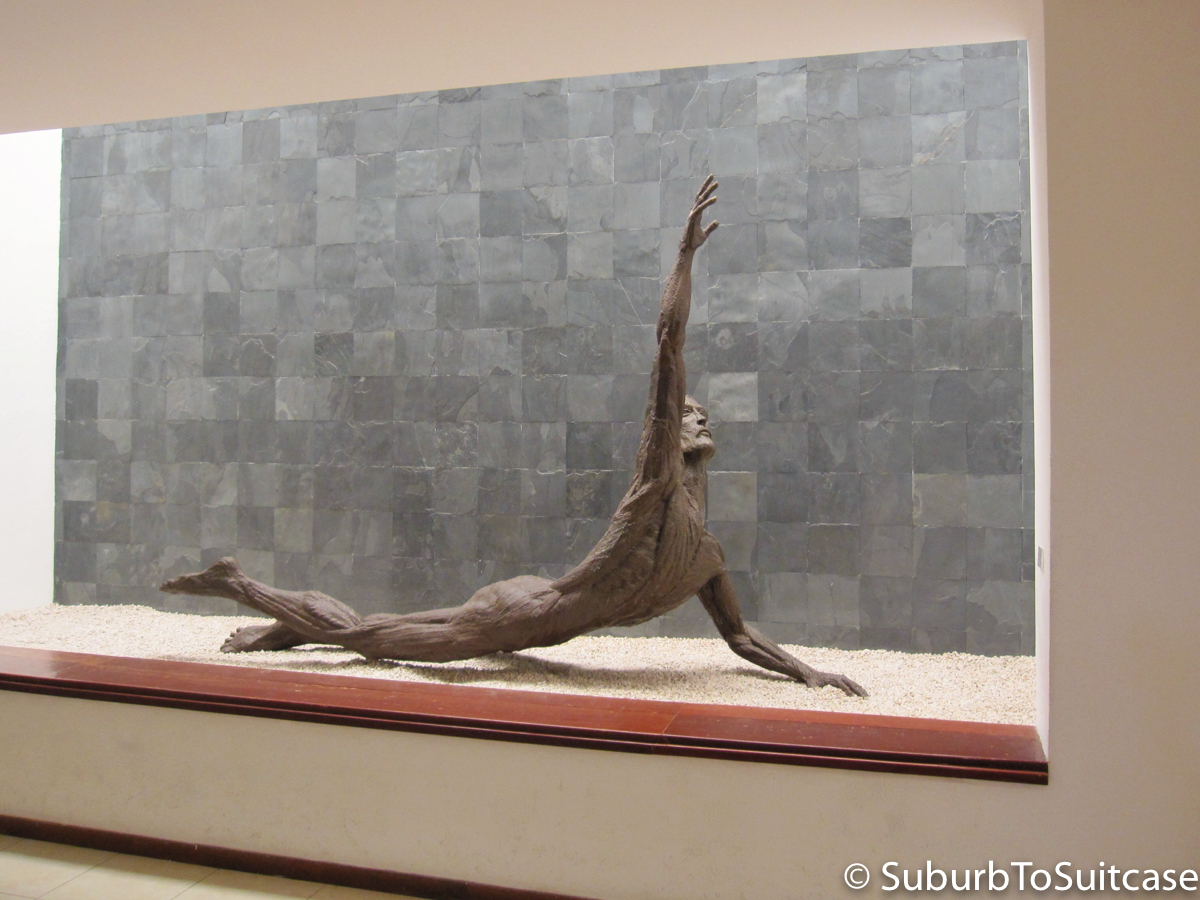
Museo de Arte de El Salvador (MARTE)
There are two primary types of markets in the city. The basic mercado is full of vendors that sell everything from fresh eggs, rice, beans and fruit (mandarins, avocados, green mangoes, tomatoes) to clothing, shoes, toiletries and toys. The largest is in El Centro – the atmosphere is congested and very loud with political propaganda blasting from speakers. There are many, many buses here. There are also several mercados de artesanias in the city where you can purchase local crafts and textiles which help support the economy. It can be fun to stroll through these places just to take in the energy.
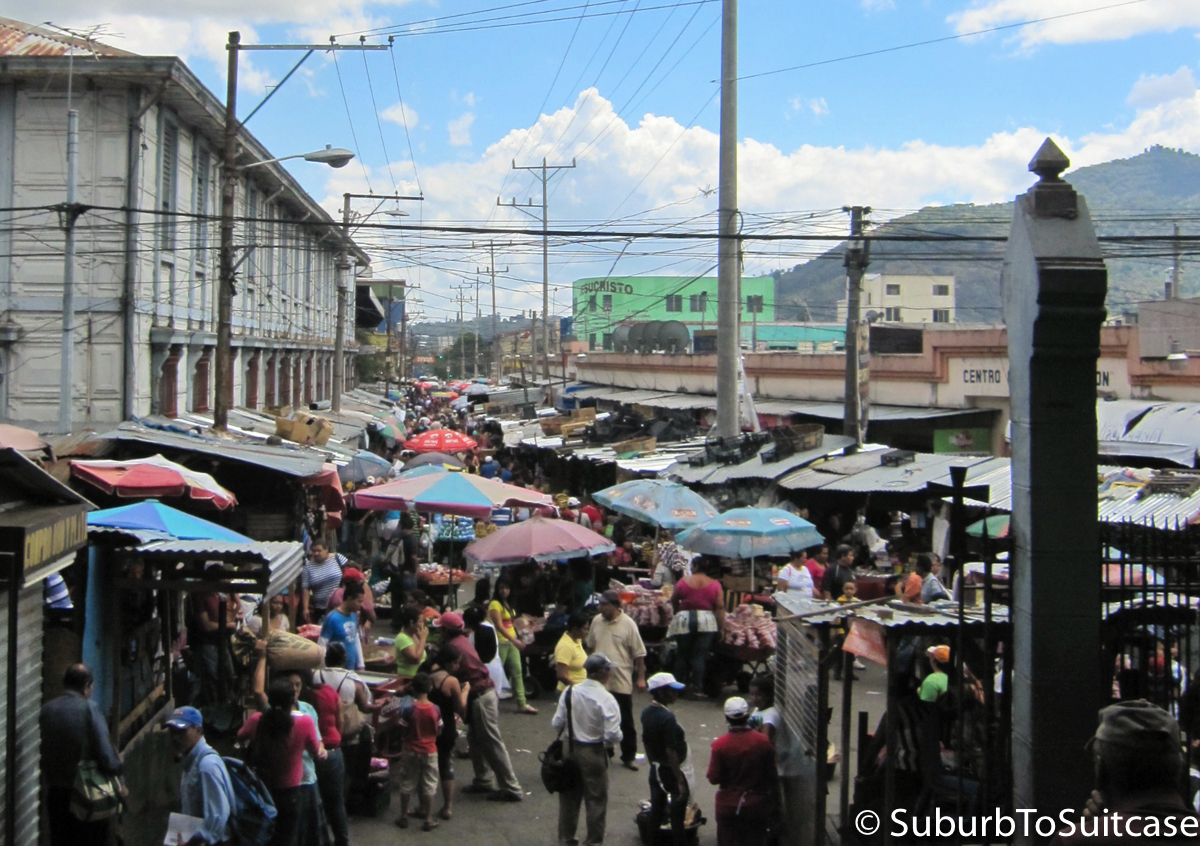
Outdoor food/necessities market in the Libertad neighborhood in San Salvador

Mercado de Artesanías craft market featuring handmade items, local coffee, etc.
A visitor to El Salvador should come prepared with comfortable shoes and an appetite for strenuous walking and lots of stairs. Most streets are based on a hill so the climbing just from one location to the next can rival San Francisco because of the intensity of the heat and the varying elevations. You will definitely get a workout here!
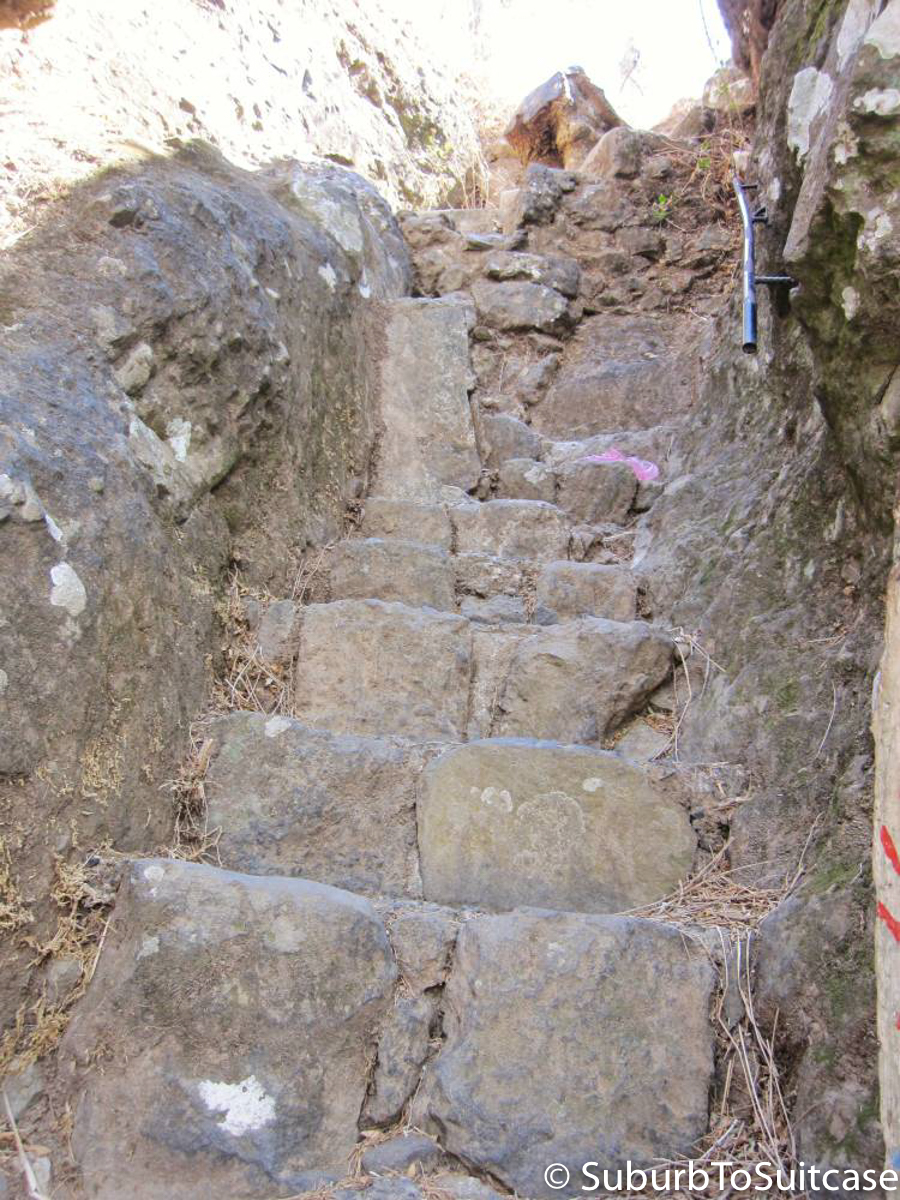
Common Hiking Terrain
Getting around by vehicle can be tricky since San Salvador is a huge city and quite dispersed. There are numerous buses and taxis, though. Depending on the day or time, streets can be heavily obstructed with traffic and outdoor mercados. You really need to know where you are going or it can all look like a maze. The good news is that there are some notable points in the city (the big cathedrals, the monument of El Salvador del Mundo, etc.) that can help a visitor navigate direction. There is no currency conversion for Americans since the US dollar is primary here.
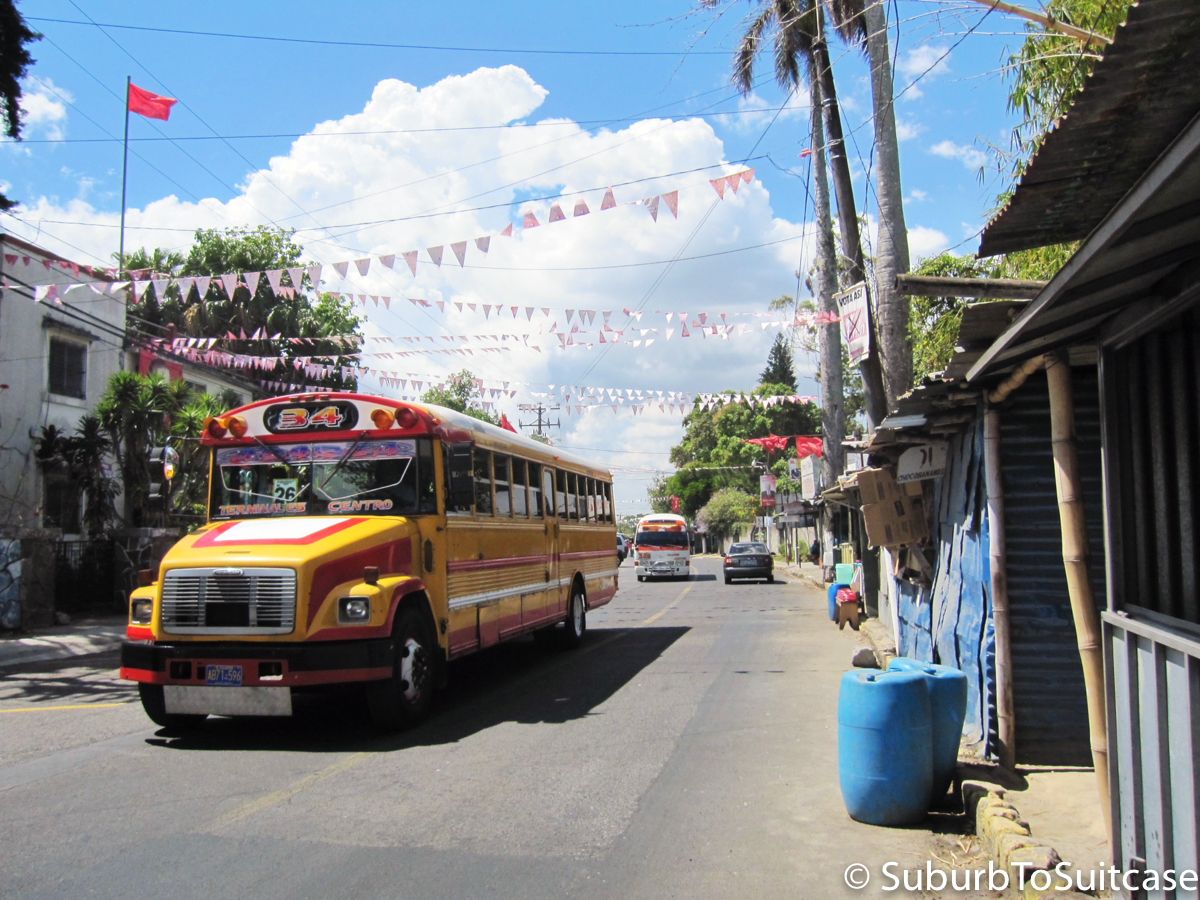
Anyone who has traveled through Central America has seen “chicken buses” which transport masses of people and goods through (and between) towns.
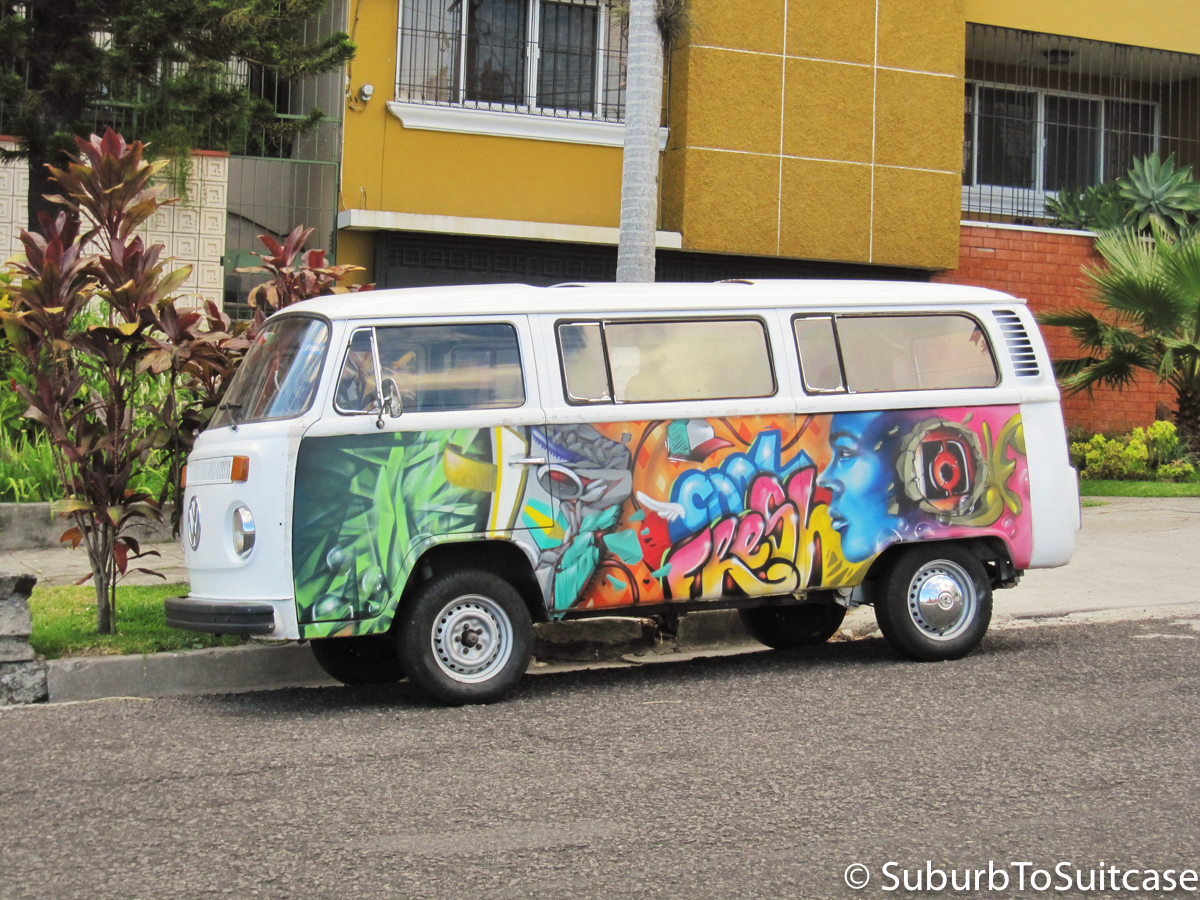
Graffiti and creative street art exists on various mediums in El Salvador
Salvadoran food is fantastic but in the heavily populated city areas, it can be interestingly difficult to find among the sea of American fast food. In the outlying areas, it is much easier to find delicious local fare. The best food is definitely the pupusas. Similar to my favorite Colombian arepas, these thick maize/corn tortillas are pockets of heaven. They might contain cheese, beans or meat (or some combination of these) and then you can top them with your preference of tomato sauce or cabbage vinaigrette. The best I tried, by far, were with chicharrón. This term is used differently in various countries, but in El Salvador, it describes seasoned shredded pork (meat only) that is later ground with onions and tomatoes – yum.
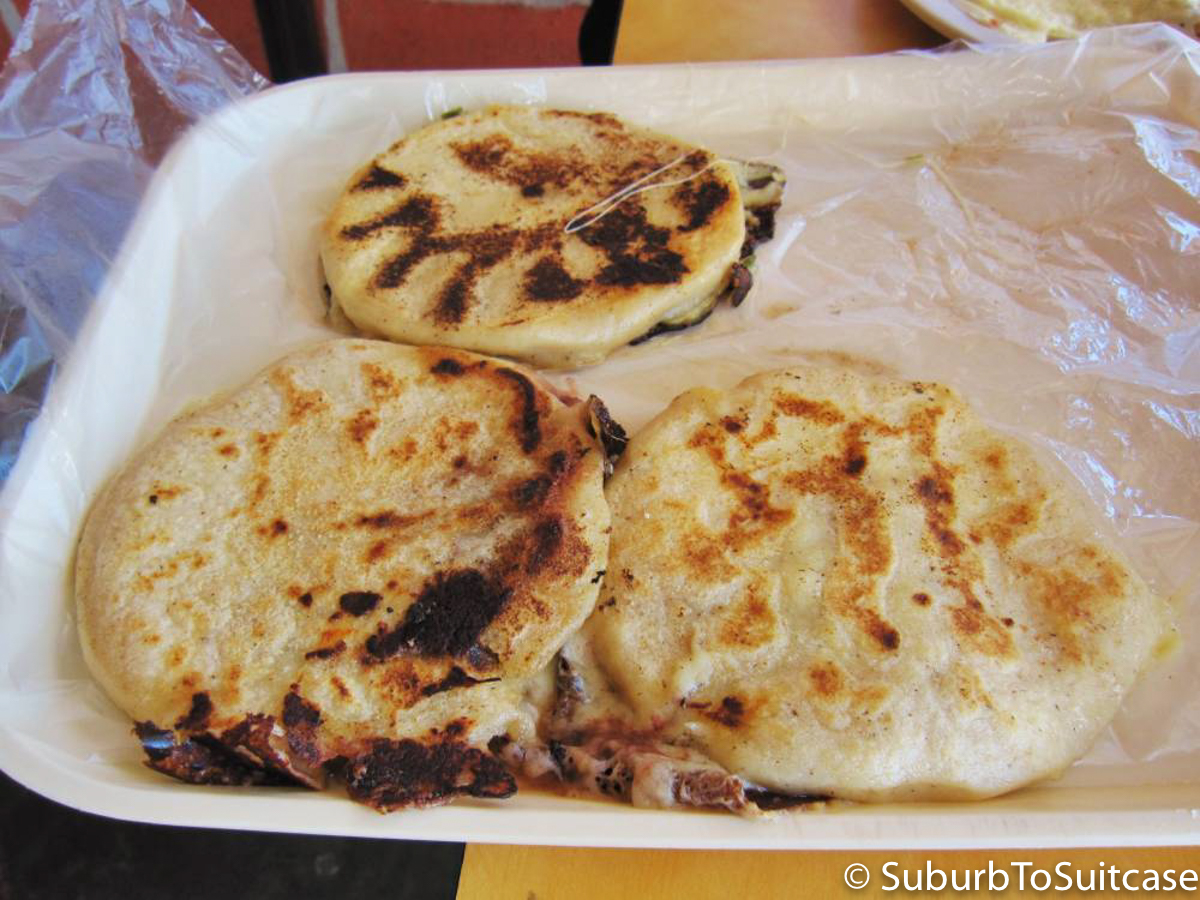
Melty Pupusa Goodness!
For someone who has not spent much time in Central or South America, it might be alarming to see armed guards at most business entries, residences, hotels, gas stations, etc. This was something I expected and had experienced before, but I tend to forget that not everyone has been similarly exposed. The guards might be local police, military or even private security depending on the location. Regardless, their presence is notable and something I took very seriously. While I tend to walk with authority and purpose on my solo travels for safety reasons, I really appreciated the fact that these guards were nearby. Not once did I feel concerned for my safety, but I also followed instructions from the locals as to where not to walk and when to be indoors. It is good to remember the guards are in position for a reason.
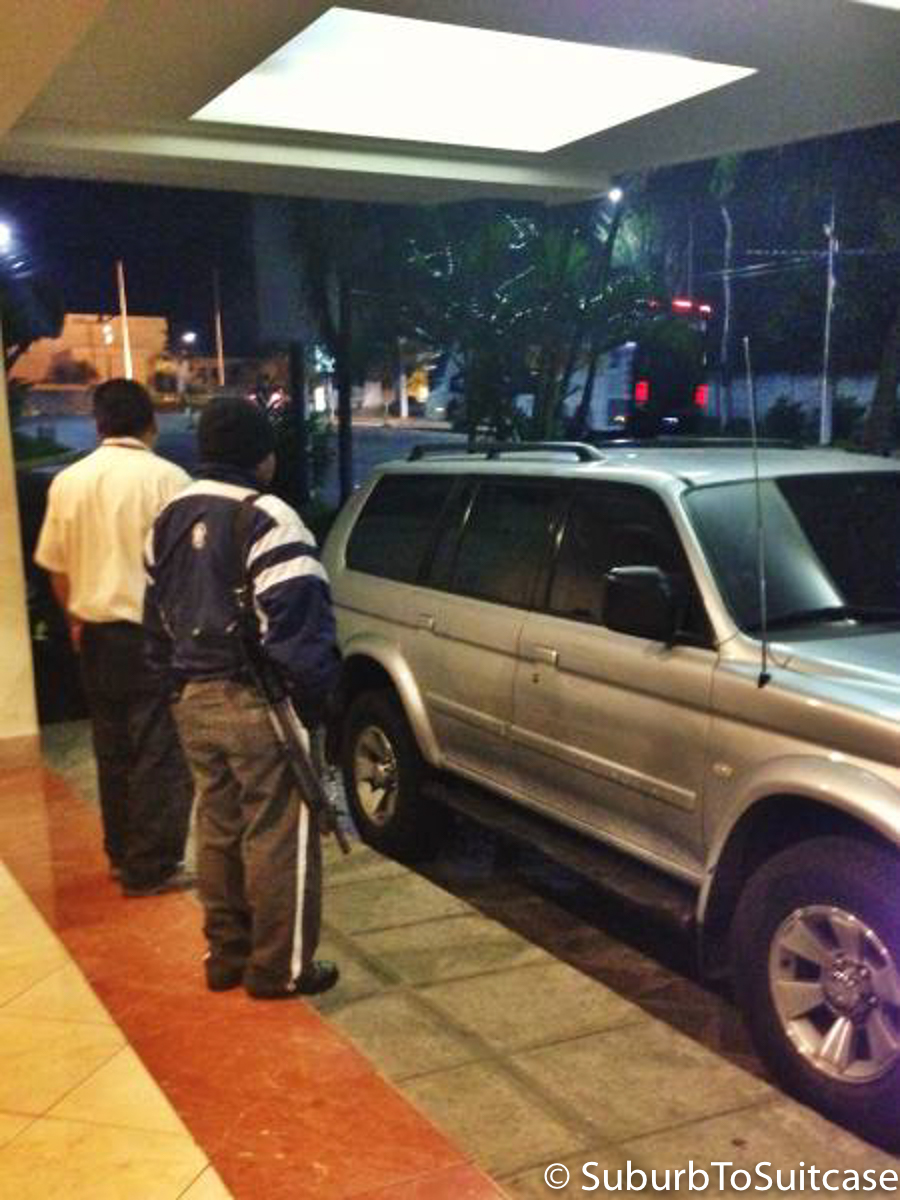
Early Morning Private Bus Station Security
My recommendation to a traveler considering El Salvador (or honestly, any visitor to a new area) would be to do some research if possible before arriving to better understand the local culture, language and history in order to be prepared both emotionally and physically for the experience. I feel so blessed to have made this trip and would return in a heartbeat.

There was an impromptu display near my hotel the evening before I left El Salvador. I was lucky to be able to snap some photos in a hurry.
